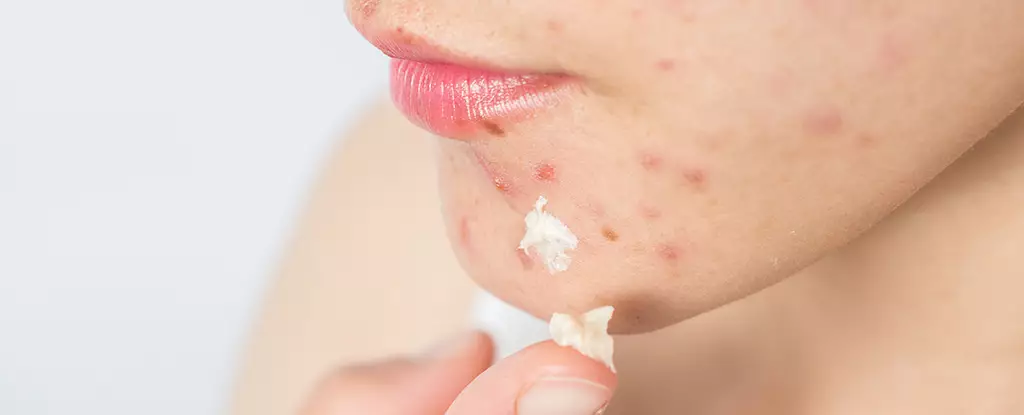Acne vulgaris, a common and distressing skin condition affecting millions worldwide, is caused by the overgrowth of Cutibacterium acnes. Conventional treatments like antibiotics and hormonal therapies are increasingly becoming ineffective due to bacterial resistance or undesirable side effects. However, promising research from the University of South Australia, the University of Adelaide, and Aix-Marseille Université in France unveils a potential breakthrough: the use of an antibacterial compound, narasin, delivered inside microscopic envelopes. This revolutionary treatment, facilitated by nanoparticle delivery, holds promise for effectively targeting C. acnes without the downsides of traditional therapies.
In laboratory conditions, the researchers demonstrated the effectiveness of narasin against C. acnes. However, the real triumph lies in the discovery that nanoparticle delivery significantly enhances the treatment’s efficacy. By encapsulating narasin in nano-micelles, microscopic capsules a thousand times smaller than a strand of human hair, the antibiotic can penetrate deeper into the skin. The study reveals that the nanoparticle delivery system improves solubility by over 100 times compared to a simple water mixture. This remarkable enhancement is attributed to the use of Soluplus, a compound that not only improves the solubility of the nano-micelles but also stabilizes the drug delivery process.
While the study utilized pig ear skin, mimicking actual acne-prone skin involves reaching the hair follicles below the surface. These follicles, along with the connected sebaceous glands, serve as the thriving environment for C. acnes. Encouragingly, the nanoparticle gel shows promise in effectively targeting and eliminating the bacteria in these challenging areas. The researchers aim to validate these findings in clinical trials involving human subjects, paving the way for a potential narasin nanoparticle gel to combat acne at its source.
Notably, the gel developed by the scientists exhibited impressive stability at room temperature for four weeks. This finding enhances the practicality of the treatment and its potential for commercial viability. For the millions plagued by the physical and psychological impact of acne, the significance of this research cannot be overstated. Acne profoundly impacts approximately 9.4 percent of the global population, primarily adolescents, causing distress, embarrassment, anxiety, low self-confidence, and social isolation. Therefore, advancements in acne treatment can have a transformative effect on the lives of sufferers.
Expanding Knowledge and Overcoming Challenges
As research continues to unravel the causes of acne, a deeper understanding of the condition becomes crucial for developing effective treatments. With the slow encroachment of antibiotic resistance, innovative approaches like nanoparticle delivery offer hope for combating acne vulgaris from novel angles. By delivering narasin directly to acne target sites, the nanoparticle gel tackles the bacteria head-on, potentially revolutionizing acne treatment.
While this research presents a remarkable breakthrough in the fight against acne vulgaris, further investigations are necessary to translate these findings into clinical applications. Rigorous clinical trials encompassing diverse demographics will be pivotal in understanding the treatment’s efficacy, safety, and tolerability. Additionally, optimizing the nanoparticle delivery system, exploring potential side effects, and maximizing treatment accessibility are crucial next steps to ensure the successful implementation of this groundbreaking therapy.
The world stands on the precipice of a remarkable breakthrough in acne vulgaris treatment. The utilization of nanoparticle delivery to transport the antibacterial compound narasin deep into the skin holds immense promise for targeting and eliminating Cutibacterium acnes. As research expands our understanding of acne’s underlying mechanisms, innovative therapies become indispensable. By utilizing technology to enhance treatment efficacy, this revolutionary approach offers hope to the millions afflicted by the physical, emotional, and social burdens of acne vulgaris. With further research and development, the day may soon come when acne is no longer an insurmountable challenge but a conquerable foe.


Leave a Reply